Summer is here, and the heat can be brutal—not just for us, but for our feline friends too. When temperatures soar, it’s essential to know how to keep cats cool in summer to avoid the risk of heatstroke and other heat-related issues. While skilled at self-regulating through panting and grooming, cats can struggle when the mercury rises too high. Without proper care, even the coolest cat could end up in a hot mess.
This article will give practical ways to help your kitty beat the heat. We’ll explain why cats get hot, share effective methods to keep them comfortable indoors and outdoors, and discuss how to spot and treat heatstroke.
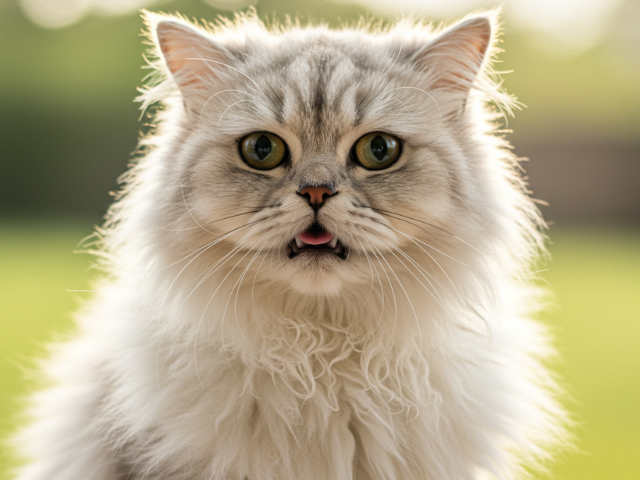
Before learning different cooling strategies, it’s best to understand why cats are so susceptible to heat. Unlike humans, who sweat all over their bodies, cats have limited ways to regulate their temperature.
These limited cooling mechanisms mean that cats can quickly overheat in extreme temperatures. Certain breeds are even more vulnerable:
Knowing these limitations will help you protect your cat from the summer heat.
Let’s start indoors. Here’s how to keep cats cool and comfortable inside your home.
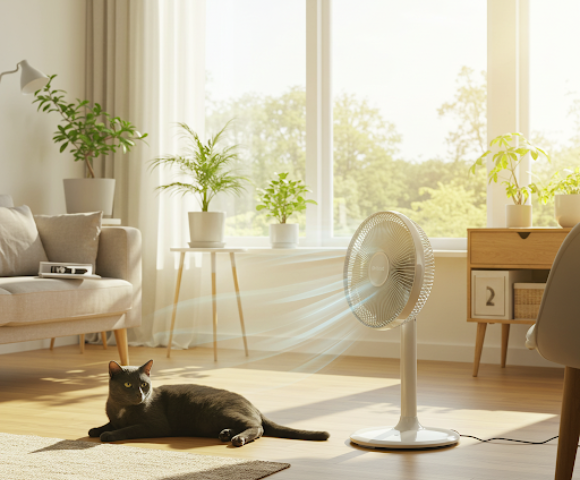
Good ventilation is key. Use fans to circulate air throughout your home. Even a simple box fan or ceiling fan can make a big difference. Position fans strategically to create a cross-breeze, pulling cooler air in and pushing warmer air out.
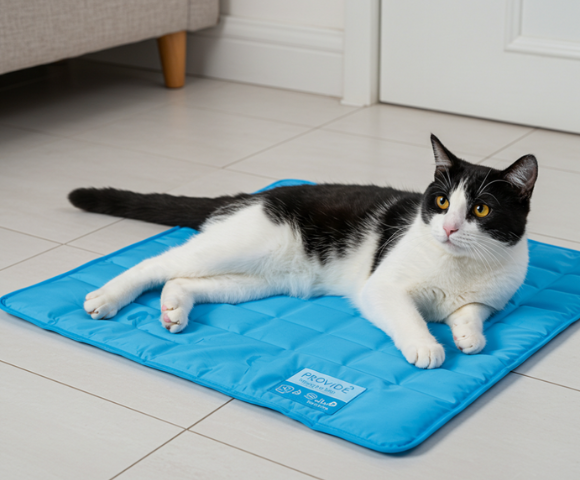
These are fantastic for providing a chilly spot for your cat to relax. Cooling mats are often filled with a gel that absorbs body heat, providing a consistently cool surface. You can also find self-cooling pads that don’t require refrigeration.
Place them in your cat’s favorite napping spots. That way, they will feel cool and comfy while catching up on their Zs.
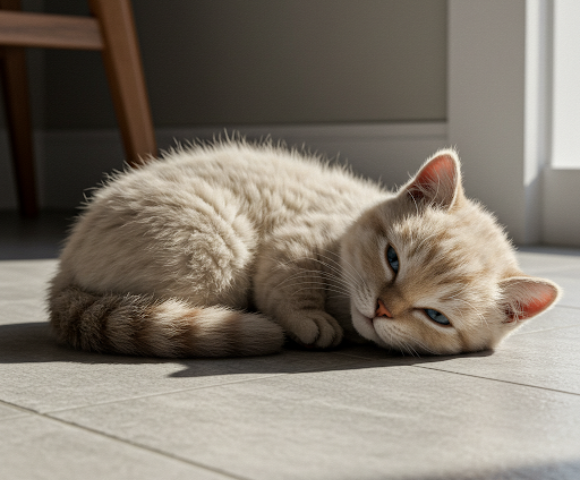
Cats instinctively seek out cool surfaces in hot weather. Ensure they can access tile or concrete floors, which stay cooler than carpeted areas. You can also place a ceramic tile or marble slab in a shady spot for them to lie on.
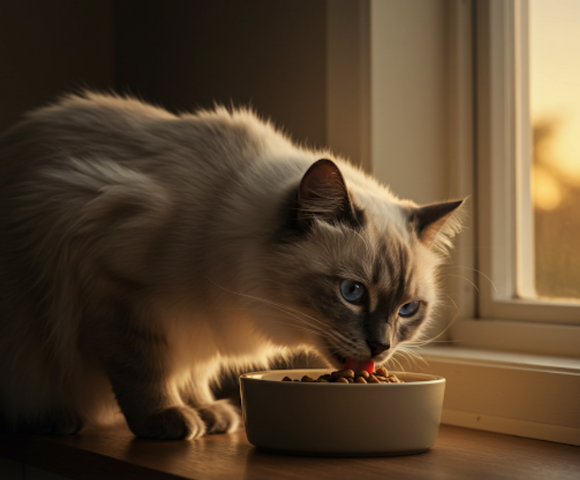
Consider feeding your cat during the cooler parts of the day, such as early morning or late evening. Digestion generates body heat, so feeding during the hottest hours can make your cat feel even warmer. It is best to change their feeding schedule to keep your cat comfortable during these hot months.
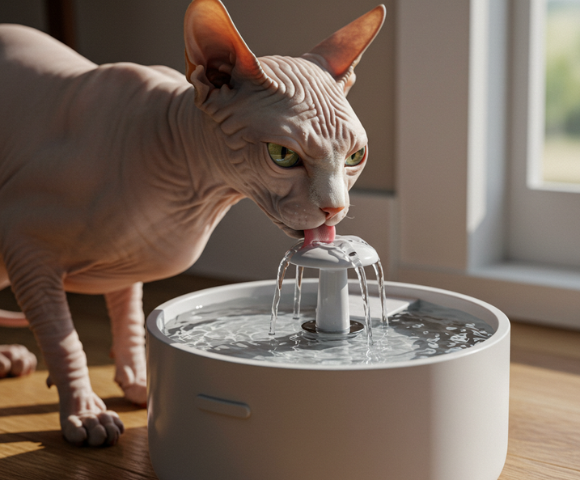
Hydration is crucial. Always provide multiple bowls of fresh, cool water throughout your home. Consider adding ice cubes to the water to keep it chilled longer. Some cats are fascinated by running water, so a pet drinking fountain might encourage them to drink more.
Even if you don’t have air conditioning, you still have many options for keeping your cat cool in summer without AC. You can create a safe, cooled environment with simple, cost-effective solutions.
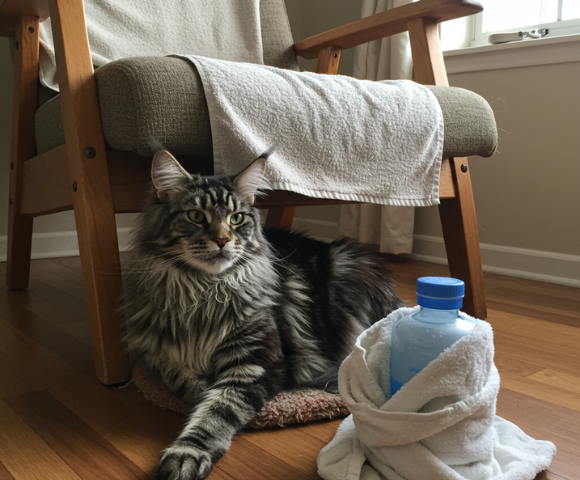
You don’t always need high-tech gadgets to lower the temperature. Use typical household items to create cooling aids. Fill water bottles and place them in the freezer, then wrap them in a soft towel to create a cool pad.
Another option is to drape damp towels over a chair or near your cat’s hideaway to create a cool spot.
These simple DIY methods work wonders for cooling down your cat. They provide instant relief during the hottest parts of the day.
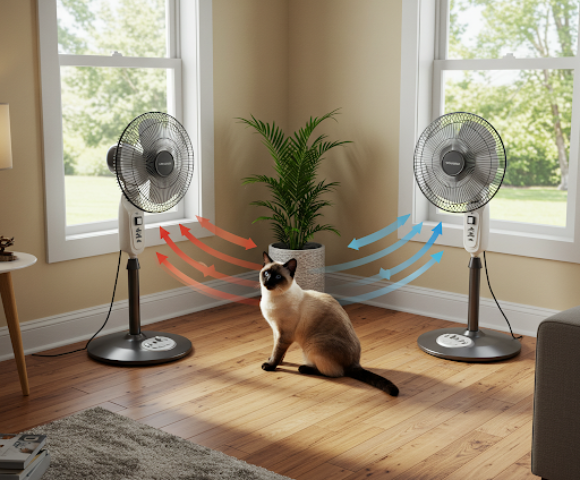
A strategically placed fan can beat the heat, even without AC. Set up a fan in a low-light area and point it towards open windows to blow in the cooler air.
You may also use oscillating fans to help distribute the cool air evenly, giving you and your cat a refreshing breeze. The correct fan placement shows that even an AC-free home can enjoy a breezy summer without spending much energy and money.

Ensure your home has good ventilation. Keep curtains or blinds closed during the day to prevent the sun’s heat from accumulating indoors. If your room is less hot, spend more time in that area with your cat.
Proper ventilation and natural shade are effective substitutes for air conditioning. Having these setups at home will keep your cat cool even without AC.
Outdoor adventures are fun, but the summer heat can take a toll on your cat. These steps will ensure your cat stays comfy and safe when strolling and playing outside.

Timing is crucial when planning outdoor activities. Limit your cat’s exposure during peak heat hours, typically from late morning to mid-afternoon. Early mornings or late evenings offer much cooler conditions, reducing the risk of overheating.
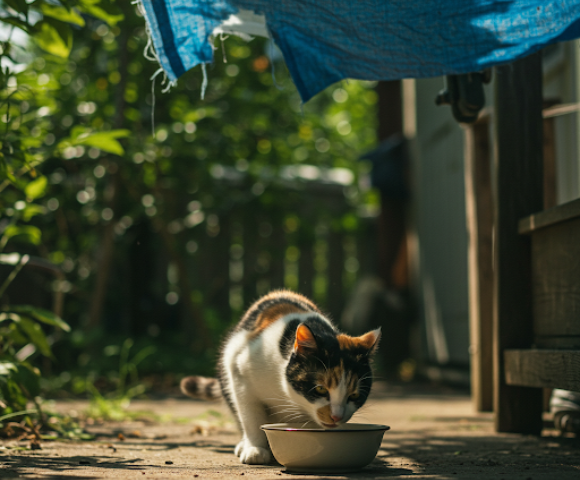
If your cat goes outside, always ensure there are plenty of shades. Create a cool zone with umbrellas, trees, or a makeshift canopy. Additionally, always have a bowl of fresh water within reach to keep your cat hydrated and cool while outdoors.

Never leave your cat in a parked car. Cars can heat up incredibly fast, and even a short trip can turn dangerous. If you must travel with your cat, ensure they have proper ventilation and never let them out of your sight.
Following these outdoor precautions will allow your cat to enjoy the fresh air without risking their health during summer’s most intense hours.
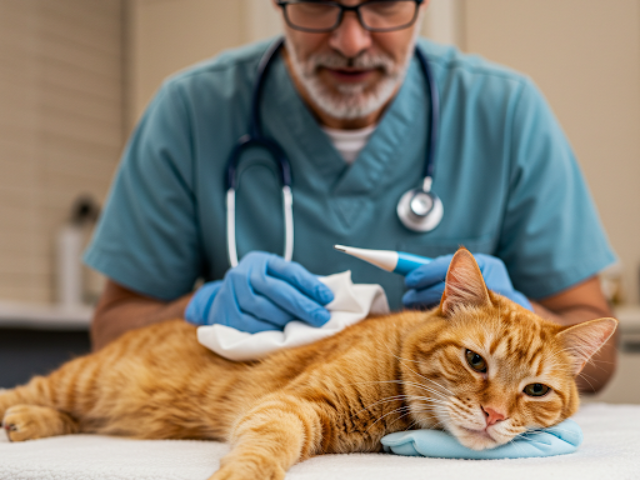
Even cats are prone to heatstroke when the temperature is scorching hot. Knowing the signs of heatstroke and how to respond to it is crucial for every cat owner.
Heatstroke is a severe condition when a cat’s body temperature rises to dangerously high levels (typically 105°F/40.5°C or higher) and they cannot regulate it effectively. It is a form of hyperthermia and requires immediate treatment.
Below are signs your cat is having a heatstroke.
If you see these symptoms in your cat, follow these tips:
Heatstroke is a medical emergency. Even if your cat seems to recover after first aid, always take them to a veterinarian immediately. Internal organ damage may not be immediately apparent.
The sooner you recognize heatstroke and take action, the better your cat’s chances of survival and full recovery.
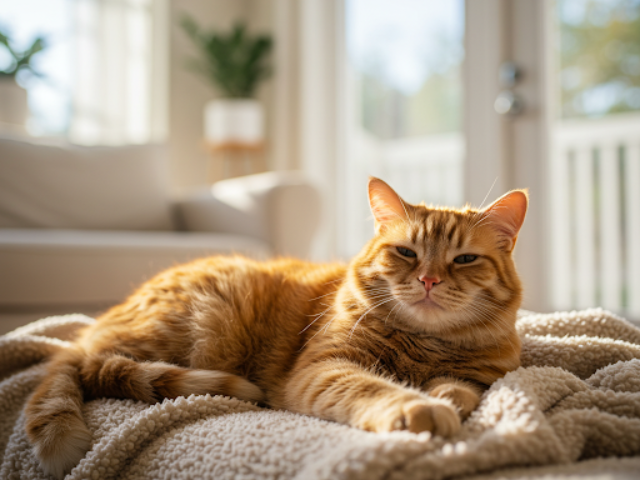
Keeping your cat cool in summer is all about being proactive and prepared. By understanding how cats regulate their temperature and implementing these simple strategies, you can help your furry friend stay comfortable and safe all summer long. From providing cool spots and plenty of water to recognizing the signs of heatstroke, your vigilance can be a lifesaver.
Remember, your cat relies on you to be their advocate and protector. So, embrace these tips, stay observant, and enjoy a fun, safe summer with your feline companion! Now you know how to keep cats cool in summer.

